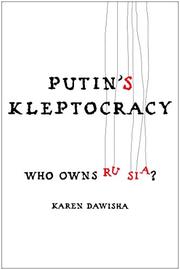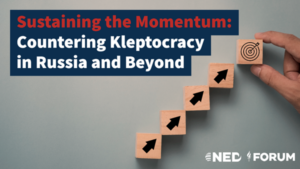Tom Cooper is a great military commentator about Russia's War of Aggression against Ukraine. This one is from Medium.
Tom Cooper
Medium, Nov 3, 2022
Ukraine War, 3 November 2022
Today was the 253rd day of Putin’s 3-day-invasion of Ukraine — and I’m going to take a closer look at different sections of the frontline.
STRATEGIC
Early on 29 October, Ukrainians hit the Russian Black Sea Fleet in the port of Sevastopol with semi-submerged, remotely controlled vessels. It’s not entirely sure what did they hit, but there are strong indications that two warships were targeted, including at least one Krivak-class frigate. Here I would recommend following this Twitter thread for further info.
The Keystone Cops in Moscow explained that the attack didn’t happen, then that they have repulsed it. Conclusion is obvious: they couldn’t suffer any kind of losses because they have repulsed an attack that didn’t happen — and, therefore, because nothing has happened, Moscow suspended its participation in the grain export deal. Then, less than 48 hours later, it recalled that decision: supposedly, Ukraine offered ‘written guarantees’ it wouldn’t attack any of Russian Navy warships controlling the ‘safe corridor’ for ships exporting Ukrainian grain…
What? You think the Russian foreign policy is making 0 sense? Silly you… and, therefore, Moscow is meanwhile eagerly accusing Kyiv of preparing either a dirt bomb attack, or some sort of a major incident at the Enerhodar NPP. You know, because Ukrainians are badly in need of poisoning half their country with radioactivity… not because the infrastructure of the NPP has been modified so much, the last 20+ years, the Russians can’t connect it to their own power grid any more. No, no. Therefore, the Russians have shelled the NPP’s power supply, today, cutting it off. The cooling of five reactors is now depending on diesel-powered generators: there’s enough fuel for these to work for 14 days…
Ah yes: and after failing to mobilise even 90,000 reservists — due to complete disorganisation, caused by widespread corruption (thank you, Putin) — the VSRF has launched its autumn draft: 120,000 conscripts will be drafted — and deployed to fight in Ukraine. Because, you know, Ukraine is Russia, so it’s OK if they fight there: that’s not violating any of Putin’s laws… makes as much sense as NATO supplying 14 different artillery systems, 50 different types of vehicles, and about a dozen of different air defence systems to the ZSU: nothing better but making logistics more complex in the middle of a war…
Meanwhile, Surovikin’s Missile Offensive is going on. There are days with lots of activity (like on 31 October, when Ukrainians claimed to shave shot down 44 out of 55 Russian cruise missiles and LPGMs fired at Ukraine), and then there are relatively quiet days, ‘in between’. Generally, this offensive is said to be targeting the Ukrainian power grid. However, four S-300s fired at Mykolaiv yesterday, have hit a gymnasium, a college, and a college dorm. Similarly, in Nikopol, on the western bank of the Dnipro, the Russians deployed in the Enerhodar area continued shelling schools and kindergartens. Thus, that itch in my small toe tells me, there ‘might be’ a slightly different purpose in what is done there — though still ‘perfectly’ in sense of Putin’s plot for the entire future of Ukraine.
The last few days were quite full of reports about heavy losses of VKS helicopters. For example, on 31 October, Ukrainians claimed three (yes: 3) Ka-52s as shot down in the Kherson area (including this one). Arguably, this one was actually shot down weeks ago, but this ex-Belarusian Mi-8MTKO-1 (possibly operated by the Wagner PCM), was shot down on the 31st. Moreover, a video surfaced purportedly shown somebody planting explosive charges on a Ka-52 at the Veretye AB, in the Pskov Oblast.
Regarding the Ukrainian Air Force: this is lately flying 14 to 20 air strikes a day, mostly against targets in Kherson Oblast. Apparently, it lost one Mi-8 on 31 October.
WESTERN LUHANSK
At the tactical level, for me it’s kind of hard to get used to the ‘new battlefield’ — especially so in western Luhansk: after months of reporting about fighting for Izyum, then Severodonetsk, then Lysyschansk, then along the Siversky Donets River and on approaches to Slovyansk etc., the frontline is now almost 100km further EAST. Sure, I’ve reported about Ukrainian offensives on the Oskil River and beyond it, back in September and early October, but still… Moreover, except with rain and resulting mud, Ukrainians seem to still be busy recovering all the stuff the Russians have left behind when fleeing. For example, this 2S5 Giantsint-S was captured with a full load of ammo calibre 152mm.
Furthermore, it’s hard to describe what exactly is going on along this section of the frontline. Essentially, both sides are reporting ‘local counterattacks’, lots of shelling, too, but not really a ‘lot’ in terms of big-style action. That said, east of Kupyansk, and after smashing something like a dozen of VSRF’s BTGs back in late September, Ukrainians seems to have crossed the large empty area immediately east of that town to reach Pershotravneve, Orlyanske, Kyslivka, and Kotlyarivka, but haven’t liberated any of the villages in question. Further south, there are rumours — and then rumours ‘spread’ by quite good sources — about Ukrainians being much closer to the Svatove than generally reported. However, the mass of such posts in the social media is removed shortly after, and then…. ‘nothing happened’. We’ll see what comes out there.
Further south from there, the frontline has stabilised down the western side of the T1303 highway, that is, approximately: from Kuzemivka to Kolomychykha, then down to Raihorodka and Kovalivka (all of these are still under the Russian control.
The Russians are still controlling Kremina, and from there regularly sending their reservists into attacks in direction of Torske. Surely enough, the latter was claimed as (re-)captured by all the possible Putin-fans over a month ago, but, somehow, turns out to still be under Ukrainian control. Read: could be something is exaggerating there. At least a bit, and probably because of all the losses the VSRF has suffered in that area…
DONBASS
Since about two weeks, the Russians are back to offensive in the Siversk area. The last two days, they have reached Bilohorivka (on the Siversky Donets, 10km west of Lysychansk). Haven’t taken the place, but seems to have captured few ruined homes on its eastern side.
Three months of Russian assaults on Bakhmut have resulted in profound changes of the frontline in that area. The 93rd Mech pushed the Russians back in the Soledar area, but don’t worry: they’re still assaulting the eastern side of Bakhmut, still assaulting Ivanhrad and Opytne south of Bakhmut. With other words: exactly as predicted by all the possible Putin-fans: the VSRF has ‘secured’ this ‘strategically important town and area’… or not at all. I know, it’s not fair to make jokes, then lots of people there are suffering — and terribly at that. On 3 November, they lost a Su-25 in that area(apparently, pilot ejected safely). But really, I haven’t ‘seen’ any dumber, idiotic, and more pointless ‘military operation’ of this kind since the IRGC’s idiocy best-known as Karbala-4, back in December 1986…
Further east/south-east, and like since eight months now, the Russians are assaulting Avdiivka, Opytne, Vodyane, Pervomaiske, Nevelske, Krasnohorivka, Marinka- AFAIK, Ukrainians might be withdrawing from Opytne, but Vodyane and Avdiivka are holding as well as all the months already. Certainly enough, some of Russian descriptions of their assaults on Pavlivka are reminding me of excerpts from Tolstoy’s War and Peace: the 37th explanation for their failure to capture the village was something about bad weather….and darkness of the night…
Unsurprisingly, all of this is resulting in lots of Ukrainian videos shown tanks and artillery of the VSRF getting blown up. Here the winning contender for the traditional, monthly turret-tossing contest, and here another reason for the Russian tankmen to complain about the lack of tank-vs-tank combat in this war…
Perhaps Surovikin is determined to offer us a classic example of ‘Putin’s Military Strategy’, as is going to be taught at the Academy of the GenStab for the next few hundreds of years? Read: why try something new, when one can go on squandering thousands of mobilised reservists to continue bolstering a failure?
SOUTH
The ‘biiiig’ Russian offensive on Vuhledar and Hulaypole is so successful, that….well, yes: at first, the situation was tense: 3–4 days ago, the Russians attacked Novomykhalivka, Pavlivka, even Vuhledar…. Have suffered heavy losses and meanwhile it’s Ukrainians that are attacking Marfopil.
KHERSON
There is a constant flow of reports about some sort of Russian withdrawal from Kherson. For example: they should have removed several checkpoints around the Kherson city, they should have removed their flag from the city hall of Kherson, they should be withdrawing a growing number of troops from the right bank of the Dnipro River etc. AFAIK, there’re still lots of VSRF and VDV troops there, though, and Ukrainians continue pounding targets in the area of the Antonovsky Bridge (moreover, they blew up a Russian POL depot in Chornobaivka, two days ago). Foremost, the Russian group of forces south of Davydiv Brid remains where it was, and then in force (and has recovered some terrain, the last 2–3 weeks), the entire 7th VDV Division is still in the oblast, and most of positions are holding out. Thus, sorry, not buying that (or if, then only once ZSU marches into Kherson).
…and that’s about it. At least I haven’t found much more firm data, the last few days: hope, I didn’t miss anyting important.
--

 Karen Dawisha’s book
Karen Dawisha’s book  USAID Executive Director of the Anti-Corruption Task Force Shannon N. Green (
USAID Executive Director of the Anti-Corruption Task Force Shannon N. Green ( Last year, the Biden Administration released a presidential memorandum
Last year, the Biden Administration released a presidential memorandum 


